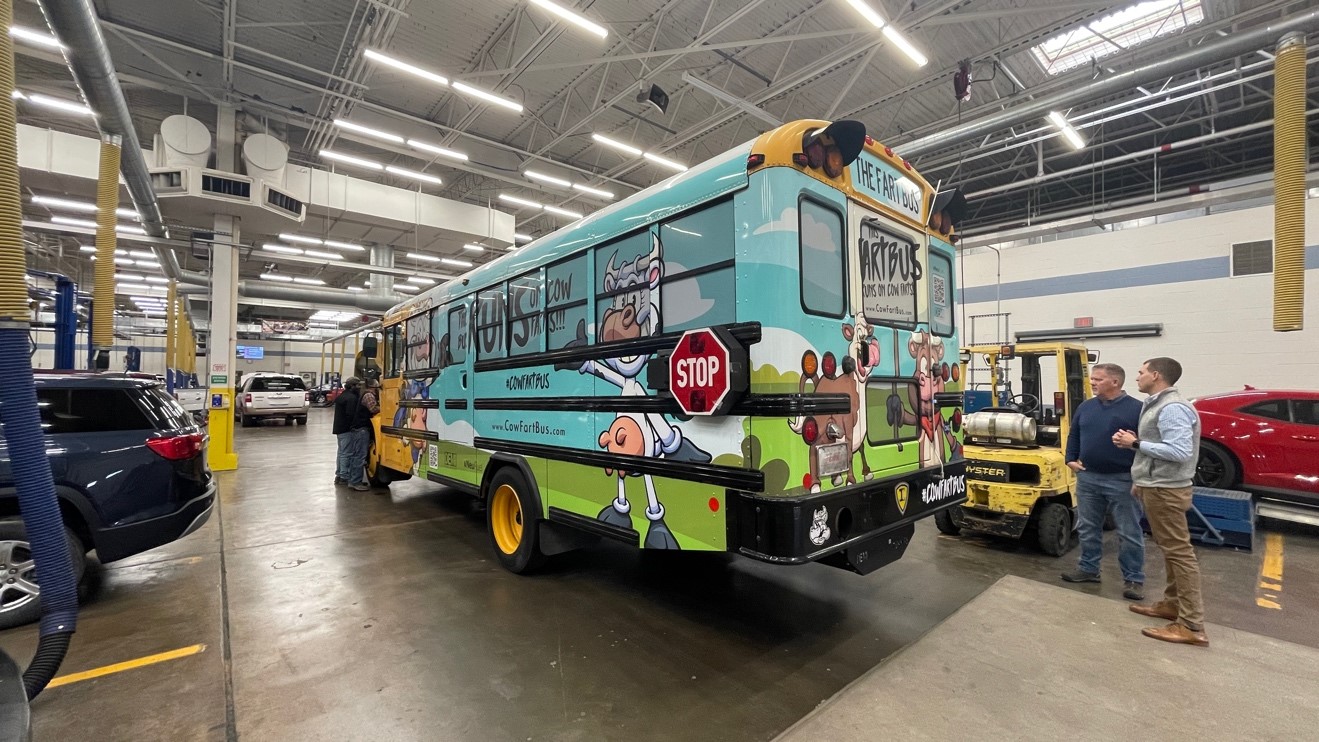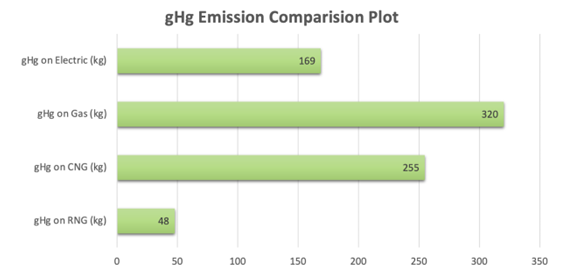by Ziyi Song
My career goal is to become a business analyst, and I have always wanted to contribute to environmental sustainability. Working with the Center for Sustainable Business and Ingevity provides me the opportunity to align my interests with my career goals and then put them into practice. The Fellowship also provides me with valuable practical experience in marketing analytics, data visualization, and data presentations to customers. I’ve gained solid fundamentals on those skills throughout the experience, and those will assist me further in my career development.
Since the beginning of the Fellowship, I’ve been studying the characteristics of multi-pronged strategies for decarbonizing fleet solutions. As there are multiple approaches in renewable energy spaces such as full electric, hybrid electric, hydrogen fuel cells, and biofuels, NeuFuel Solution at Ingevity stands out as a leader in such a space. The team developed the ANG (adsorbed natural gas) technology to make the natural gas vehicle conversion more accessible. The ANG system utilizes Ingevity’s specialized activated carbon that can adsorb or soak up natural gas molecules on its internal surface, creating a compact and stable storage medium. The activated carbon is packed into a cylinder, which can be filled with natural gas at a low pressure of around 900 psi (pounds per square inch). This is much lower than the pressure required for traditional compressed natural gas (CNG) storage, which typically requires pressures of 3,000 to 3,600 psi. The system boosted the storage efficiency and accessibility of natural gas; it represents an innovative and more sustainable approach. The NeuFuel Solution offers the fleet of medium/light-duty vehicles a chance to access natural gas from a house-grade pipeline without worrying about the safety and accessibility of expensive infrastructure.

Columbia Gas event with Chris, photo in front of the NeuFuel infrastructure.
The NeuFuel Solution also utilizes RNG (renewable natural gas), which is a type of biogas that is produced from organic materials such as agricultural waste, food waste, and wastewater. It can be used in the same applications as traditional natural gas without the need for major modifications to existing infrastructure. Since RNG is captured from organic waste, the capturing of the methane and combusting reduces the impact on the environment. Methane is 28 times more harmful than CO2 as a type of greenhouse gas. Therefore, capturing it, combusting it, and using the energy from combustion helps reduce the impact and moves us closer to carbon neutrality.
The NeuFuel team is passionate about helping the environment. They partnered with DEMI to bring the “Cow Fart Bus” to schools across the country, visited school districts and engaged with kids. The bus is being considered as an innovative and sustainable transportation solution, as it not only reduces emissions from the bus itself but also helps educate consumers about RNG. School districts can use their existing school buses to make the conversion; meaning the “Cow Fart Bus” will help them build a more sustainable and cost-saving transportation system compared to using diesel as the only fuel source.

In the picture: “Cow Fart Bus” workshop at CACC Pittsburgh
The Challenge
I’ve been researching ANG-RNG tech stack solution and alternative fuel vehicles, then attending events and studying materials to gain knowledge on the mechanism, metrics, and characteristics of the system. I discovered the challenge is to stand out among all alternative fuel solutions, particularly electric, propane, and CNG vehicles. Increasing product awareness of the solution and educating consumers on RNG is crucial for the NeuFuel team to succeed in this alternative fuel competition.
The Methodology/Approach
I’ve conducted analysis and visualization on AFDC (alternative fuel data center) data using an open source statistics tool called R on all alternative fuel vehicles to confirm my direction and strategies. The analysis found that nearly all the natural gas (CNG, LNG, LPG) or propane infrastructures are owned by the government or private organizations. Government-owned fueling facilities generally don’t open for public use; most of them are for public transportation or city works. Some of the privately owned stations are built for specific fleets. The operation of privately owned facilities is just like that of a publicly funded gas station if they are open for public access. However, the bar plot shows that less than 40 privately owned compressed natural gas refuel stations across the entire state of Pennsylvania have public access, and the rest of them are primarily owned by the government or inaccessible. This means it’s nearly impossible for regular company fleets to get access to that CNG (Compressed Natural Gas) infrastructure freely. The analysis narrows down the target audience of NeuFuel Solution to existing natural gas fleets that have accessibility issues for a refuel station and businesses that have natural gas access in their buildings. In the same analysis, the number of public electric charging stations is 30 times more (1200 charging points) than CNG refueling stations in the state of Pennsylvania. More than half of them fall in the PA category which means they were built for public access, just like a gas station. The conclusion also verifies the challenge that NeuFuel Solution is facing, to stand out among all alternative fuel solutions.


FG, Federal Government
J, Jointly owned
LG, Local Government
P, Private
SG, State Government
T, Utility
Another part of my approach is to analyze another option in the climate positive transportation pathways portfolio, electric vehicles. I’ve found out that if our electricity is not generated by enough renewable resources, the well-to-wheels (W2W) greenhouse gas emissions of fleet electric vehicles are generally higher than vehicle using NeuFuel Solution powered by RNG. The bar plot below was created with data from the ALFLEET Tool and EPA. Considering the capacity of RNG to reduce GHG emissions, the W2W emission of RNG is significantly lower than electric vehicles in the Pittsburgh region when the consumption of gasoline equivalent is 30 gallons. This emission number is obtained from the Pittsburgh region power grid, RFC west, whose electricity power source is made up of 27% gas and 35% coal. The emission calculator for the following bar plot is available here (DOWNLOAD FILE).

Learnings
When it comes to reducing carbon footprint and GHG emissions, EVs are undoubtedly cleaner and more sustainable than traditional gasoline-powered vehicles and will continue to become cleaner as we clean emissions out of the grid. However, it's important to recognize that they are not completely emission-free yet and put the “buying an EV zeros my emission" mindset away. Fighting climate change in an innovative way not only means reducing emissions, but also considering all factors as well as a cost-saving solution. The NeuFuel Solution team at Ingevity nudges the entire fleet solution industry without a convenience trade-off with ANG technology and RNG as renewable energy. Sustainability on the business-to-business side is still facing the challenge of awareness. There could be some improvements to fleet managers’ knowledge space on alternative fuels. The decision makers hold the key to nudging the process of transformation. NeuFuel team could take this as an educational opportunity for fleet managers. Exploring and comparing multiple options, both financially and environmentally, will assist the business’s growth and make a positive ESG (environmental, social, and governance) metrics impact when stepping into innovative alternative fuel vehicles.
